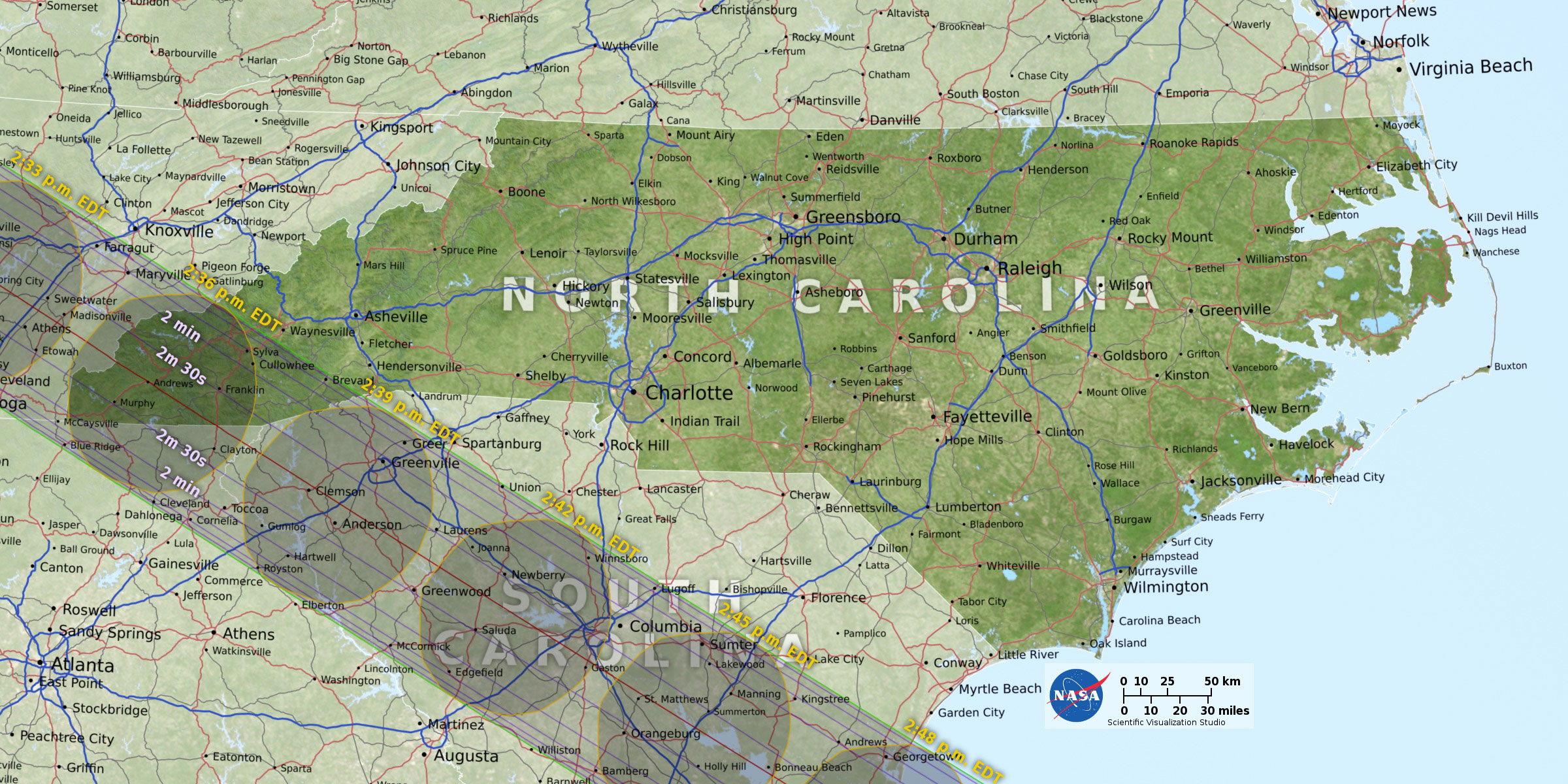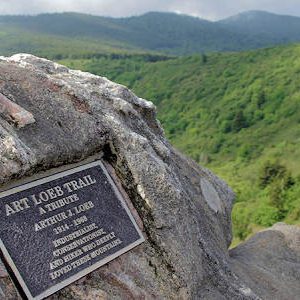The color experts predict our warm, dry winter and wet, temperate summer have set ideal conditions for a bright and healthy 2017 fall color show in the North Carolina mountains. Dr. Howard S. Neufeld, professor of biology and the “fall color guy” at Appalachian State University in Boone, says healthy trees will add to bright yellows joining the familiar orange and purple hues that mark autumn in the Asheville area. The Blue Ridge Mountains put on a show that spans six to eight weeks thanks to the variation in elevation throughout the region, according to RomanticAsheville.com.
There’s nothing quite like fall in Western Carolina — when the mountain air turns crisp and cool, the nostalgia comes flooding back with overwhelming waves of inexplicable sensation. Here are 30 reasons why autumn in Asheville is the most spectacular time of year.
1. Months of Foliage

Sarah Zucca
Due to early frost, warm weather, and a dramatic variance in elevation, the Blue Ridge boasts one of the most brilliant and long-lasting displays of foliage in the country. What a spectacular season to wander through the mountains, from high up in Craggy Gardens and Graveyard Fields, which are the first to turn, to the relative low country of Lake Lure and Chimney Rock, which are the last to peak in early November.
2. Sleep Soundly

David Clarke
Say goodbye to the restless, muggy nights of summer. A slight drop in body temperature is actually conducive to falling asleep and waking up refreshed, so curl up in your down sleeping bag and enjoy a chilly fall night under the stars. Check out Mt. Pisgah Campground, perched high in the Pisgah National Forest. Or, just sleep with the windows open!
3. Fall Festival Season is Back

Kelty
Festival season never really stops in the North Carolina mountains, but there’s an ah-mazin’ run from the Asheville Outdoor Show in September to the Asheville Holiday Parade in November. Fall also plays host to Goombay, Autumn at Oz, LEAF, and more. Head out to Franklin for PumpkinFest, an iconic mountain celebration featuring the World Famous Pumpkin Roll.
4. Happy Dogs

Peter Laurent
Dogs across the Southeast are breathing a sigh of relief now that the temperatures are finally dropping. With her fur coat no longer a burden, your dog is happily anticipating a brisk season of chasing balls, rolling in dead leaves, and accompanying you on those long, refreshing hikes.
5. Seasonal Brews
One of the most compelling reasons to get outside this season is what’s waiting for you when you return: lots of seasonal craft favorites like Asheville Brewing Company‘s Carolina Mountain Monster Imperial Stout, Catawba Brewing Company‘s King Don’s Pumpkin Ale, and Hi-Wire Brewing‘s Apricot Sour Ale. Spend some time exploring the stunning landscapes of Linville Gorge Wilderness or Pantertown Valley, then put your feet up and indulge with a sensational season brew. If a day of tasting is more of your thing, Asheville Oktoberfest can’t be beat.
6. Invigoration

Rachel Titiriga
Is it the snap in the air, the sweet relief from August’s humidity, or the backdrop of orange and gold that makes us feel so alive and and alert? Autumn breathes new life into the soul and the landscape, painting the mountains burgundy, turning cheeks pink, and instilling a craving for hard work and adventure. Channel this burst of energy by tackling some of the best trail running spots in the area.
7. Crunchy Leaves

Nana B Agyei
There’s something so satisfying and quintessentially autumn about crunching your heal down on a dry, brittle leaf. It adds yet another element of tactile delight to the endless hiking trails that surround Asheville.
8. No More Pests
The air is clear of pollen, mosquitos are no longer swarming, and poison ivy has lost its summer potency. Overall, the wilderness is a more friendly, comfortable, and inviting place to lose yourself for the weekend.
9. Cooler Races

Asheville Running Experience
Weekend warriors, get ready! Not only is the temperature cooler, but the races have more spunk and personality. The Asheville Running Experience offers five events over three days: ARX Happening, ARX Half Marathon, Asheville Brewing Super Hero 5K & Fun Run, Asheville Urban Odyssey presented by Frugal Backpacker, and Chasing Trail 8K. The cooler season also sees Asheville’s oldest running event, the Thomas Wolfe 8K; the Shut-In Ridge Trail Race; and the Asheville Turkey Trot on Thanksgiving.
10. Empty Swimming Holes

Melina Coogan
September still has its fair share of 80+ degree days and there is a major perk to taking an early fall dip: with the kids back in school and the holidays over, you might find some peaceful solitude at the region’s best swimming holes and have swimmable waterfalls all to yourself!
11. Whitewater Races

Melina Coogan
Kayakers, take your marks! The Green Race — one of the greatest spectacles in outdoor sports — takes place on the first Saturday of November.
12. Apple Orchards

Melina Coogan
In terms of classic fall adventure, nothing compares to the endless delights of an apple orchard. Go for a hay ride, hang out with a scarecrow, sip on warm cider. Picking apples under bright cobalt skies is the perfect excuse to get the whole family outside for the day.
13. Stock Up On Gear
We kick off the fall season with an awesome Labor Day Sale and keep the local love coming throughout the season to ensure everyone has the “Asheville uniform:” plaid shirt, vest, and beanie or trucker hat. Perfect for days spent on the trail and nights spent on the town.
14. Driving with the windows down

Chovee
For the past four months, driving has been either sweltering hot or artificially freezing. Fall brings the immense pleasure of driving with the windows down, making your commute to the trailhead downright enjoyable. Blast the radio and cruise The Blue Ridge Parkway (America’s longest linear park!) with fresh air rushing in and your hair flying in the breeze.
15. Bouldering Season

Melina Coogan
September kicks off the start of bouldering season in Western Carolina; the air is snappy and the holds are grippy! Throw on your wool beanie, chalk up, and get thee to Rumbling Bald.
16. Pumpkin Seeds

Melina Coogan
As if you needed another reason to carve a pumpkin: those pepitas (or pumpkin seeds) are chalk full of magnesium, manganese, and protein. Roast them with a little sea salt and bring them along on your next hiking session for a healthy, locally grown snack. Churches, schools, and civic organizations all sell pumpkins as fundraisers, so you can feel even better about your new orange purchase.
17. Cozy Dates

Melina Coogan
It’s only natural that we’re all looking for love before winter sets in. That, combined with the inherent coziness of shorter days and blustery weather, makes autumn the optimal season for dating. Check out these romantic fall outings for you and your sweetie.
18. Scarf Season

Melina Coogan
Be it chunky knit cowl or fine wool wrap, we all appreciate the little boost of being bundled up in a bright scarf. Part fashion and part good sense, it’s the perfect accessory for heading outdoors, out with friends, or to the office.
19. Leaf Piles
At the intersection of household chores and childhood delights, enormous leaf piles are autumn’s answer to the swimming hole. Rake one up and dive right in — you know you want to.
20. Bonfires

Melina Coogan
Stave off brisk evenings and impending darkness with the warmth and glow of a backyard bonfire. Invite some friends, toast a marshmallow, and crack open some cheer. For many people, wood smoke is one of the most pleasant and nostalgic smells out there. Kick back, breathe deep, and enjoy!
21. Afternoon Light

Melina Coogan
By mid-October, the foliage has reached the height of its splendor. When late afternoon sunlight filters through the deciduous canopy, the forest is transformed into a shifting kaleidoscope of gold, amber, and scarlet. Even the most focused and dialed-in adventurer will take a moment to pause and moved by this display of mountain glory.
22. Photography
With such an exuberant spectrum of color and texture, fall is a dynamic season for anyone with an eye for photography. Capture every radiant detail from a single copper leaf to a whole sweeping landscape. (We recommend visiting these particularly photogenic places during peak foliage.)
23. Foggy Morning Trail Runs

Beau B
What could be a better start to your day than a trail run through the still-quiet fog of an October morning? Perhaps you’ll even see the silver of the season’s first frost feathering the grass and leaves before the warmth of the daylight melts it away.
24. Race Bikes at Oskar Blues
The sublimely named Dirt Diggler Gravel Grinder will be held in September at the Oskar Blue REEB Ranch. This hybrid bike race is a 50/50 blend of gravel and pavement, capped off with 2 miles of sweet single track. If it’s not your thing, biking through the meandering roads of Transylvania County is great or you can also experience DuPont National Forest‘s autumn finery by foot.
25. Hot Coffee on Cold Mountain Mornings

Melina Coogan
Simply put, waking up in the mountains on a cold fall morning, preparing a hot cup of coffee, and watching the steam rise against the brightening sky is one of the greatest pleasures on earth. If you prefer a barista to craft your cup o’ joe, High Five‘s Riverside Drive location on the French Broad River in Woodfin has a great view.
26. Petrichor
Fall brings the possibility of passing tropical storms, bringing strong winds and heavy precipitation to the Blue Ridge. Rivers rise, gardens thrive, and we get to experience petrichor — that wonderful earthy scent that occurs after a hard rain falls on dry earth. For a rejuvenating adventure, check out a riverside hike such as the Laurel River Trail after a rainstorm and breathe deep.
27. Corn Mazes

Kevin Zamani
Getting lost amongst the stalks: it’s an autumnal right of passage. Check out the Eliada Corn Maze, just five minutes from Downtown Asheville. One hundred percent of proceeds go directly to Eliada Children’s Home.
28. Sunny Days on the Rock
Autumn is the most enjoyable time of year to explore the local crags. The rock is no longer sweating in the summer sun and the views from the top are more beautiful than ever. Tie onto the sharp end and tackle the iconic multi-pitches at Looking Glass Rock in the cool breeze, without fear of burning up.
29. Cider Season

Melina Coogan
We may not fully understand the difference between apple juice and apple cider, but we know that cider is by far the more delicious way to rehydrate after a long ride, especially when it’s fresh pressed from the orchards of Western Carolina. For the hard stuff, be sure to check out CiderFest NC in October to taste some of the region’s finest.
30. The First Dusting of Snow

Melina Coogan
Sometime in late October, we’ll wake up and catch our first glimpse of the Blue Ridge Mountains dusted in snow. Then we’ll enjoy a brief and vibrant few weeks of frosty mornings coupled with warm days before winter takes its hold on the land. For outdoor enthusiasts, this means only one thing — ski season is just around the corner.
Originally written by RootsRated.
Featured image provided by flattop341
























 May
May
 September
September The turn of the year means 2016 is in the books—and for many of us, it can’t come a moment too soon. The end of a year usually brings a time of self-reflection, a time to get our priorities in line and make a plan for improvement. That seems especially important this year.
The turn of the year means 2016 is in the books—and for many of us, it can’t come a moment too soon. The end of a year usually brings a time of self-reflection, a time to get our priorities in line and make a plan for improvement. That seems especially important this year. On a tree-lined street, your closest park or greenway, or one of the many trails a few minutes outside of town, hiking is great because it doesn’t require a lot of special equipment. A good pair of hiking shoes from your local outdoors store is good enough to start. As you graduate to more moderate trails, trekking poles can come in handy.
On a tree-lined street, your closest park or greenway, or one of the many trails a few minutes outside of town, hiking is great because it doesn’t require a lot of special equipment. A good pair of hiking shoes from your local outdoors store is good enough to start. As you graduate to more moderate trails, trekking poles can come in handy.  Whether you’re a runner, biker, or hiker (or want to be one), having a specific challenge in mind will give you structure and motivation. If you’re already running a few times a week, but want to warm up your winter right away, the
Whether you’re a runner, biker, or hiker (or want to be one), having a specific challenge in mind will give you structure and motivation. If you’re already running a few times a week, but want to warm up your winter right away, the  Share your skills, meet new people, and make a difference by volunteering with organizations like
Share your skills, meet new people, and make a difference by volunteering with organizations like 